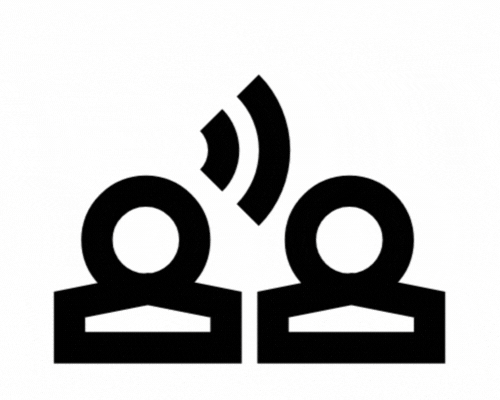3 min read
Rethinking "Digital First" in Insurance: A Balanced Approach
When we hear "digital first," it’s easy to assume it means going all-in on apps, text, emails, and online portals while ditching traditional methods...
4 min read
 Leslie Sapienza
:
Jul 18, 2025 12:07:13 PM
Leslie Sapienza
:
Jul 18, 2025 12:07:13 PM

In the insurance sector, communication with policyholders has traditionally been transactional.
Renewals, invoicing, cancellations, claims—these interactions often feel impersonal and lack empathy. While they fulfill operational requirements, they fail to address the emotional and individual needs of the policyholder. For leaders in insurance—whether you're a product manager, underwriting leader, policyholder experience leader, or claims leader—there’s an opportunity to rethink how your organization engages with its policyholders. The answer lies in transforming workflows into policyholder journeys.
This shift is not just about improving communication; it’s about creating experiences that resonate with policyholders on a deeper, more meaningful level. By embedding empathy and personalization into every interaction, insurers can build stronger relationships, enhance policyholder satisfaction, and ultimately drive business growth. Here’s how to make the transition.
Workflows in insurance are designed to optimize operational efficiency and effectiveness. They are linear processes focused on completing specific tasks, such as sending a renewal notice, processing a claim, or issuing a cancellation letter. While these workflows are functional, they often overlook the human element. Policyholders are treated as account numbers rather than individuals with unique needs, preferences, and emotions.
Policyholder journeys, on the other hand, take a holistic view of the policyholder experience. They involve mapping out every touchpoint a policyholder has with your organization, from the moment they research insurance options to the day they renew or file a claim. By designing these journeys with empathy and personalization in mind, insurers can transform routine interactions into meaningful experiences.
To design effective policyholder journeys, it’s essential to step into the shoes of the policyholder. Insurance is often associated with moments of stress—whether it’s navigating coverage options, dealing with claims after an accident, or managing premium increases. Each interaction carries an emotional weight that impacts how policyholders perceive your brand.
Consider the renewal process. A generic email reminding a policyholder to renew their coverage might fulfill its purpose, but it misses an opportunity to strengthen the relationship. What if that email acknowledged their loyalty, highlighted how their coverage has protected them over the past year, and offered personalized recommendations based on their evolving needs? Such an approach demonstrates empathy and makes the policyholder feel valued.
Similarly, during claims processing—a critical moment in the policyholder journey—policyholders often feel vulnerable and anxious. Clear communication, proactive updates, and a compassionate tone can significantly improve their experience.
To create personalized and empathetic policyholder journeys, insurance professionals must first identify the key touchpoints that define the policyholder experience. These touchpoints include:
By mapping out these touchpoints and understanding the emotional journey of policyholders at each stage, insurers can identify opportunities for improvement.
Leveraging Data and Technology to Enhance Customer Journeys
Data analytics plays a crucial role in understanding policyholder behavior and preferences. By examining past interactions, insurers can gain valuable insights into what their policyholders prioritize. For instance, analysis may reveal that younger policyholders prefer digital communication, while older policyholders tend to favor face-to-face interactions. Furthermore, data from call center transcripts can offer early indicators of a customer's likelihood to churn.
Technology enables insurers to act on these insights at scale. Customer Relationship Management (CRM) systems can help track policyholder interactions across multiple channels, ensuring consistency and personalization. Artificial Intelligence (AI) can analyze sentiment in policyholder communications and recommend empathetic responses tailored to each individual.
For instance, AI-powered chatbots can provide instant assistance while maintaining a warm and conversational tone. Similarly, automated email campaigns can deliver personalized messages based on policyholder milestones, such as anniversaries with the company or upcoming renewals.
Transitioning from workflow-oriented processes to policyholder journey-focused strategies requires careful planning and execution. Here are actionable steps to guide insurance leaders:
Empathy should be at the core of every policyholder journey design. Train your teams to consider the emotional state of policyholders during each interaction and craft communications accordingly.
Create detailed maps of your policyholders’ journeys, identifying every touchpoint and its associated emotional impact. Use these maps as blueprints for redesigning processes with personalization in mind.
Solicit feedback from policyholders after key interactions to understand their experiences and identify areas for improvement. Use surveys, focus groups, or direct interviews to gather insights.
To enable personalized communication at scale, adopt tools like content management platforms, customer communication platforms, and AI-driven solutions. Ensure these technologies seamlessly integrate with existing processes.
Equip your staff with the skills needed to deliver empathetic and personalized service. This includes training policyholder service representatives to handle inquiries with care and empowering claims adjusters to communicate proactively.
Customer journeys are not static—they evolve as policyholder expectations change and new technologies emerge. Regularly revisit your journey maps and make adjustments based on feedback and data insights.
Transforming workflows into policyholder journeys is not just a strategy—it’s a mindset shift that prioritizes empathy and personalization in every interaction. For insurance professionals, this approach offers numerous benefits: enhanced policyholder satisfaction, increased loyalty, and improved retention rates.
By understanding the emotional needs of policyholders, leveraging data-driven insights, and adopting technology solutions that enable personalization at scale, insurers can redefine their relationships with policyholders. The result is not just better communication but stronger connections that drive long-term success.
As leaders in underwriting, product management, claims, and policyholder experience, you have the power to lead this transformation within your organizations. Start today by rethinking how you engage with policyholders—not as transactions but as journeys worth designing with care.
Let’s build an insurance industry where every policyholder feels seen, heard, and valued—not just during critical moments but throughout their entire journey with us.
3 min read
When we hear "digital first," it’s easy to assume it means going all-in on apps, text, emails, and online portals while ditching traditional methods...

2 min read
The way insurance companies communicate with their policyholders is changing fast. Gone are the days when interactions were limited to policy...

3 min read
Today’s most prominent (and prolific) companies achieved success by building intelligently upon aging foundations instead of utilizing a rip and...